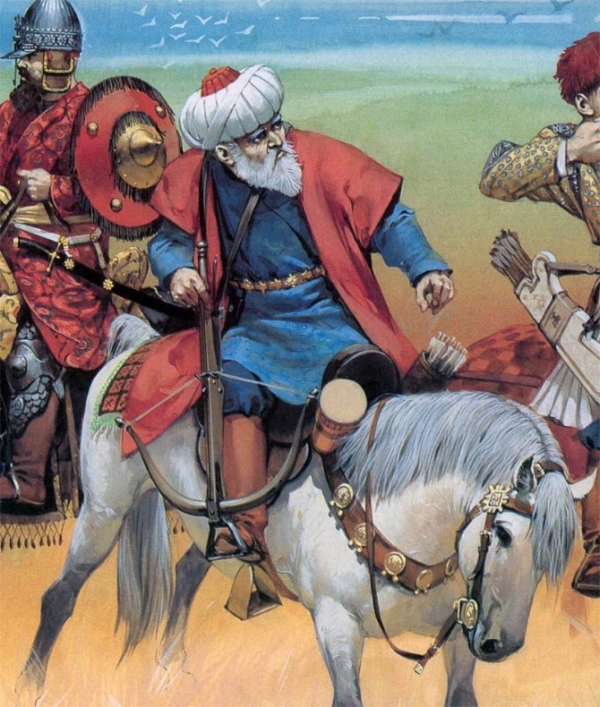Saif ad-Din Qutuz, also spelled Kutuz, (Born November 2, died October 24, 1260) was the third of the Mamluk Sultans of Egypt in the Turkic line from 1259 until his death in 1260. It was under his leadership that the Mamluks achieved success against the Mongols in the key Battle of Ain Jalut. Qutuz was assassinated by a fellow Mamluk leader, Baibars, on the triumphant return journey to Cairo. Although Qutuz’s reign was short, he is one of the most popular Mamluk sultans in the Islamic world and holds one of the highest positions in Islamic history.
Battle of Ain Jālūt
On this day, 25th Ramadhan 658AH, Saif al-Din Qutuz (from the Mamluks) stopped the advance of the Mongols who for decades wreaked havoc across the Muslim lands from Samarkand to Baghdad to Syria. Qutuz and his general Baibars marched with their army to the plains of Ain Jālūt and defeated the army of Hulagu Khan (the grandson of Ghenghis Khan). This was the first Mongol defeat since they had launched their westward campaign out of Mongolia 43 years earlier, bringing an end the Mongol advance.
By the grace of Allah, the descendants of the Ghenghis Khan later converted to Islām and began another glorious chapter in the history of Islām.
The Mongols swept across the Muslim world, putting an end to the Abbasid Caliphate [Getty Images] The Battle of Ain Jalut and the fall of Acre
The Mamluk sultan, Saif Ed-Din Qutuz, defeated the Mongol army in the battle of Ain Jalut in 1260 in Palestine, legitimising the Mamluk state.
By the time Antioch falls to the Mamluks in the late 13th century, the Frankish states are pretty weak. Antioch itself is not the great principality the great power that it had been during the 12th century. That really does spell the end for the crusaders. “This battle opened the door for the Mamluks to enter history. Shortly after the battle, Qutuz was killed and Baibars became sultan. The Sultanate of Baibars is considered the real start of the Mamluk state,” says Sabra.
Sultan Baibars made it his mission to capture all the crusaders’ citadels on the road between Cairo and the Levant, which he did before annexing Antioch.
“By the time Antioch falls to the Mamluks in the late 13th century, the Frankish states are pretty weak. Antioch itself is not the great principality, the great power that it had been during the 12th century. That really does spell the end for the crusaders,” says Phillips.
Sultan Baibars was succeeded by Mamluk sultan Al-Mansour Qalawun who took over Tripoli in 1289.
“If Baibars destroyed 50 percent of the crusaders’ force, Qalawun smashed 40 percent of what remained. What did Europe do in response? It didn’t send a single soldier,” says Mahmoud Imran, professor of European medieval history.
In the late 13th century, several European states emerged as sovereign nations with their own challenges and agendas.
Setting off for Acre, the last crusader stronghold in the Holy Land, Sultan Qalawun’s army headed to the Levant, but as soon he reached the outskirts of the city, he fell ill. On his deathbed, he appointed his son, Al-Ashraf Khalil, as his successor.
Subsequently, in April 1291, after a six-week-long siege, Acre fell to the Mamluk sultan, Al-Ashraf Khalil.
“The crusaders fought hard, not heroically … They fought ferociously because they failed to recognise the moment to leave had arrived,” says Muhammad Moenes Awad, professor of history at Sharjah University.
With the fall of Acre, the crusades came to an end after almost two centuries of bloodshed.
The crusades ended centuries ago, but the impact of this chapter of history lives on, and is very much alive in the modern world. In fact, for hundreds of years, the struggle has continued in the very same lands with Jerusalem at its heart.







